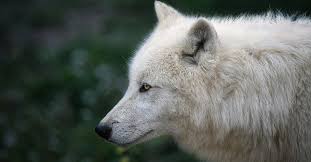Buffalo milk has been a staple in many cultures for centuries, particularly in South Asia and parts of Europe. It is prized for its rich, creamy texture and high nutritional value. However, you might have noticed that buffalo milk often commands a higher price tag compared to cow’s milk. In this article, we will delve into the Top 10 reasons behind this price difference.
- Nutritional Superiority
Buffalo milk boasts a higher concentration of key nutrients compared to cow’s milk. It contains more protein, calcium, and vitamins A and D. This superior nutritional profile makes it a popular choice for individuals seeking a more nutrient-dense dairy option. The higher content of fat and protein in buffalo milk contributes to its thicker and creamier consistency, which is ideal for various culinary applications.
- Lower Milk Yield
Buffaloes, on average, produce less milk per day compared to cows. This lower yield directly impacts the overall production volume, which can influence the market price. Additionally, buffaloes require more specialized care and feeding, adding to the cost of production.
- Seasonal Variations
The production of buffalo milk can be significantly influenced by seasonal factors. During certain periods, milk production may decline, leading to fluctuations in supply and demand. This can drive up the price of buffalo milk, especially during peak demand seasons.
- Processing and Packaging Costs
The processing and packaging of buffalo milk often involve specialized techniques to preserve its unique qualities. These processes can be more labor-intensive and resource-demanding compared to cow’s milk, contributing to higher production costs.
- Demand and Supply Dynamics
The increasing popularity of buffalo milk products, particularly in regions with a growing health-conscious population, has led to a surge in demand. However, the supply of buffalo milk may not always keep pace with this rising demand. This imbalance between supply and demand can further contribute to price increases.
- Geographical Factors
The availability and price of buffalo milk can vary depending on geographical location. In regions with a higher concentration of buffalo herds, the price may be relatively lower due to increased supply. Conversely, in areas where buffalo farming is less prevalent, the price may be higher due to transportation and logistical costs.
- Consumer Perception and Branding
Consumer perception plays a significant role in pricing. Buffalo milk is often perceived as a premium product due to its nutritional benefits and unique characteristics. This perception, coupled with effective branding and marketing strategies, can influence consumer willingness to pay a higher price.
- Government Policies and Subsidies
Government policies and subsidies can impact the price of dairy products, including buffalo milk. In some countries, subsidies may be provided to dairy farmers, which can help stabilize prices. However, in other regions, government policies may not be as supportive, leading to higher prices for consumers.
- Distribution Channels and Retail Markups
The distribution channels and retail markups involved in bringing buffalo milk to the market can also affect its final price. Longer distribution chains and higher retail markups can contribute to increased costs for consumers.
- Cultural Significance and Traditional Practices
In some cultures, buffalo milk holds significant cultural and traditional importance. It may be used in specific rituals, ceremonies, and traditional recipes. This cultural significance can influence consumer demand and willingness to pay a premium for authentic buffalo milk products.
Conclusion
The combination of these factors collectively contributes to the higher price of buffalo milk compared to cow’s milk. While it may be more expensive, the superior nutritional profile and unique qualities of buffalo milk make it a worthwhile investment for those seeking a healthier and more flavorful dairy option.




